
Barcelona, a city renowned for its rich history and stunning architecture, is home to one of the most iconic landmarks in the world: the Sagrada Familia. This basilica, designed by the visionary architect Antoni Gaudí, captivates visitors with its intricate facades and soaring towers, making it a must-visit destination for anyone exploring the city.
Join us on a journey of discovery as we delve into the marvels of this architectural masterpiece. In this article, we will take you on a walking tour, highlighting the fascinating details and stories behind the construction of the Sagrada Familia. Get ready for a memorable experience in **Exploring Barcelona's Iconic Sagrada Familia: A Fascinating Walking Tour**, where art, history, and culture intertwine in breathtaking harmony.
Discovering the Architectural Marvel of Sagrada Familia
The Sagrada Familia stands as a testament to the genius of Antoni Gaudí, whose unique vision is reflected in every aspect of this monumental basilica. Visitors are often struck by the intricate details found throughout the structure, from the organic shapes of the columns to the vibrant stained glass that bathes the interior in colorful light. This architectural marvel is not just a feast for the eyes; it also embodies Gaudí's deep spirituality and connection to nature.
As you wander through the Sagrada Familia, take note of the various stylistic influences that converge in its design. The basilica showcases elements of Gothic and Art Nouveau, creating a harmonious blend that is both timeless and innovative. Here are some key features to observe:
- Fagades: Each facade narrates a different story, depicting the Nativity, Passion, and Glory of Christ.
- Spires: The towering spires symbolize the twelve apostles, the Virgin Mary, and Jesus Christ, reaching towards the heavens.
- Interior Design: The tree-like columns and organic forms create an atmosphere reminiscent of a forest, inviting contemplation.
The ongoing construction of the Sagrada Familia, which began in 1882, has become a symbol of dedication and perseverance. Despite facing numerous challenges, including the Spanish Civil War, the project continues to inspire both architects and artists worldwide. Visitors can witness the evolution of this grand vision through guided tours, which provide insights into the intricate techniques and materials used in its construction.
In addition to its architectural significance, the Sagrada Familia is a cultural landmark that attracts millions of visitors each year. As a UNESCO World Heritage site, it plays a vital role in preserving Barcelona's cultural heritage. Whether you are an architecture aficionado or a casual traveler, discovering the Sagrada Familia promises an enriching experience that resonates with the heart and soul of the city.
A Step-by-Step Walking Tour of Barcelona's Sagrada Familia
Embarking on a walking tour of the Sagrada Familia is an enriching journey that allows you to appreciate the complexity of Gaudí's design. Start your tour at the Nativity Facade, where the intricate carvings depict the birth of Christ, surrounded by delightful representations of nature. Take a moment to absorb the stories told through the stone—each figure is a testament to Gaudí's devotion to his craft.
Next, proceed to the Passion Facade, which starkly contrasts with the Nativity in its design. This facade reflects the suffering and sacrifice of Christ, showcasing angular forms and dramatic sculptures that convey deep emotion. As you walk along, look for the symbolic details, such as the use of light and shadow to evoke a sense of somber reflection.
Don't miss the chance to explore the interior of the basilica, where the forest-like columns and stunning stained glass work combine to create a mesmerizing atmosphere. As sunlight filters through the colorful windows, it illuminates the interior, bathing visitors in a spectrum of light and color that enhances the spiritual experience. Here, you can truly appreciate Gaudí's genius in merging architecture with nature.
Finally, conclude your walking tour by ascending one of the towers for a panoramic view of Barcelona. This breathtaking perspective allows you to see how the Sagrada Familia harmoniously integrates with the city's landscape. Whether you're captivated by its intricate details or inspired by its grand vision, the Sagrada Familia offers an unforgettable experience that will linger in your memory long after your visit.
The History and Significance of Sagrada Familia in Barcelona
The Sagrada Familia, a masterpiece of modernist architecture, was commissioned in 1882 and has been under construction for over a century. This ambitious project, led by Antoni Gaudí, is not only a religious temple but also a symbol of Barcelona's cultural identity. Its unique design incorporates various architectural styles, showcasing elements of Gothic, Art Nouveau, and naturalistic motifs. The basilica’s significance lies in its representation of Gaudí's vision of spirituality and his deep reverence for nature.
One of the most remarkable aspects of the Sagrada Familia is its ongoing construction, which reflects the dedication of countless artisans and workers. The project faced numerous obstacles, including the Spanish Civil War, yet continues to draw attention and support globally. This dedication to completing Gaudí’s vision serves as a testament to the enduring power of faith and creativity in architecture.
As a UNESCO World Heritage site, the Sagrada Familia holds immense importance not only for its architectural brilliance but also for its cultural impact. Each year, millions of visitors come to admire its intricate details and learn about its rich history. The basilica stands as a beacon of inspiration, where art and spirituality converge, making it a vital part of Barcelona's allure. Here are some key historical milestones:
- 1882: Groundbreaking for the Sagrada Familia.
- 1926: Gaudí's death, leaving the basilica unfinished.
- 2010: The basilica is consecrated by Pope Benedict XVI as a basilica minor.
- Expected completion: 2026, marking the centenary of Gaudí's death.
In essence, the Sagrada Familia is not just an architectural wonder; it embodies the spirit of Barcelona. Its evolving narrative is one of innovation, perseverance, and artistic expression, ensuring its place in history as a landmark of both cultural and architectural significance. Each visit offers a unique glimpse into the past and a connection to the future of this extraordinary monument.
Tips for Visiting Sagrada Familia: What You Need to Know
When planning your visit to the Sagrada Familia, it's essential to consider purchasing your tickets in advance. This will not only save you time by skipping long queues but also guarantee your spot for a specific time slot. Choose a guided tour option if you want to gain a deeper understanding of Gaudí's vision and the basilica's architectural significance. Audio guides are also available for a more personal experience, allowing you to explore at your own pace.
Dress comfortably and be prepared for varying temperatures inside the basilica. The interior can feel quite warm due to the sunlight streaming through the stained glass, so a light jacket is advisable if visiting during cooler months. Additionally, as a place of worship, visitors should dress modestly, which means covering shoulders and knees out of respect for the religious significance of the site.
This iconic landmark can get crowded, especially during peak tourist seasons. To enhance your experience, consider visiting during the early morning or late afternoon hours when there are fewer crowds. Not only will you enjoy a more serene atmosphere, but you'll also have better opportunities for capturing stunning photographs of the breathtaking architecture. Don't forget to bring a camera to capture the intricate details that make the Sagrada Familia truly unique.
Finally, take your time to explore the surrounding area after your visit. The Sagrada Familia is located near other attractions, such as the Hospital de Sant Pau and Park Güell, both of which showcase Gaudí's artistic genius. Plan a leisurely stroll through the neighborhood to soak in the vibrant atmosphere of Barcelona and discover hidden gems nearby, making your day an unforgettable experience.
Exploring the Unique Features of Sagrada Familia's Design
The Sagrada Familia is renowned for its innovative architectural features that set it apart from traditional basilicas. One of its most striking aspects is the use of hyperboloid structures that create a sense of movement and dynamism. This design not only enhances the aesthetic appeal but also serves to distribute weight more efficiently, allowing for the construction of taller and more intricate forms. The interplay of light and shadow across these surfaces adds a surreal quality, inviting visitors to experience the space in a new way.
Another unique feature of the Sagrada Familia is its thematic facades. Each facade is meticulously designed to convey a specific narrative, with detailed sculptures and reliefs that illustrate key events in the life of Christ. The Nativity Facade, for example, showcases the joy of Christ's birth with lively scenes and whimsical figures, while the Passion Facade presents a stark contrast with its somber and dramatic representations of Christ's suffering. This thoughtful approach to storytelling through architecture makes each facade a captivating experience.
Inside the basilica, the naturalistic design elements further highlight Gaudí's devotion to integrating nature into his work. The columns resemble tree trunks, branching out into elaborate canopies that mimic the feeling of being in a forest. This connection to nature is not just visual; it also influences the acoustics within, creating a serene environment for reflection and prayer. The vibrant stained glass windows filter sunlight in ways that change throughout the day, casting a kaleidoscope of colors that breathe life into the interior.
Lastly, the Sagrada Familia's continuous construction reflects the evolving nature of architecture itself. Gaudí’s original plans were extensively detailed yet left room for interpretation, enabling successive architects to contribute their vision while remaining faithful to his intent. This collaborative effort has resulted in a unique blend of historical and contemporary techniques, ensuring that each visit to the basilica reveals something new. As the project progresses towards its anticipated completion in 2026, visitors can witness firsthand the remarkable journey of this architectural masterpiece.
Best Photography Spots Around Sagrada Familia for Stunning Shots
When it comes to capturing the beauty of the Sagrada Familia, finding the right photography spots is essential. One of the best locations is Plaça de Gaudí, located directly across from the basilica. This park offers a wide-angle view, allowing photographers to frame the majestic towers against the bright sky. The landscaped gardens provide beautiful foreground elements, enhancing your shots.
Another fantastic spot is the top of Carrer de Provença, where you can capture the church in the context of the bustling Barcelona streets. Here, the juxtaposition of urban life and the serene beauty of the Sagrada Familia creates stunning images that tell a story. It's especially effective during the golden hour, when the warm light bathes the basilica.
Don't forget to explore the interior for unique shots of the stained glass windows. The way light filters through these colorful panes creates an ethereal glow that transforms the space. Bring your camera and experiment with different angles to capture the various hues and patterns that dance across the floor.
Finally, consider visiting the Nativity Facade at sunrise for breathtaking photographs. The early morning light highlights the intricate details of the sculptures, revealing the artistry in a way that's often lost in the busier hours. With these tips in mind, you're sure to take stunning shots that encapsulate the essence of one of Barcelona's most iconic landmarks.
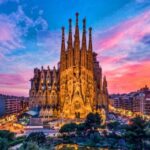 The Undeniable Beauty of Barcelona's Sagrada Familia: Exploring the 11th Wonder
The Undeniable Beauty of Barcelona's Sagrada Familia: Exploring the 11th Wonder Experience Top-notch Dental Care at Uros Associats Clinic near Sagrada Familia, Barcelona|94
Experience Top-notch Dental Care at Uros Associats Clinic near Sagrada Familia, Barcelona|94 Sagrada Familia Clinic: Emergency Services in Barcelona
Sagrada Familia Clinic: Emergency Services in BarcelonaIf you want to know other articles similar to Exploring Barcelona's Iconic Sagrada Familia: A Fascinating Walking Tour you can visit the category WHERE YOU CAN GO.
Leave a Reply

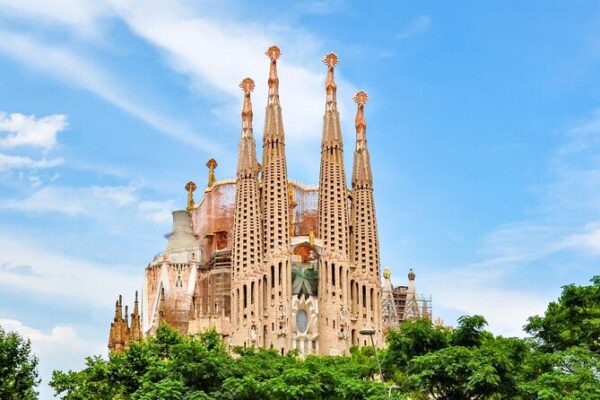
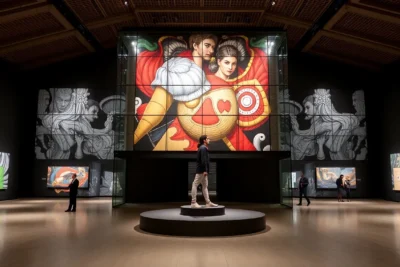
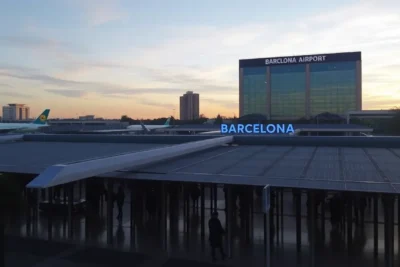

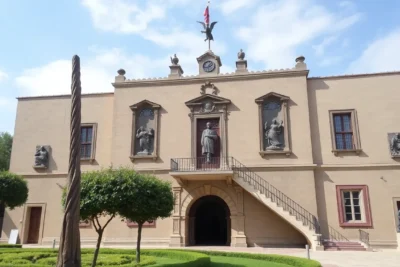

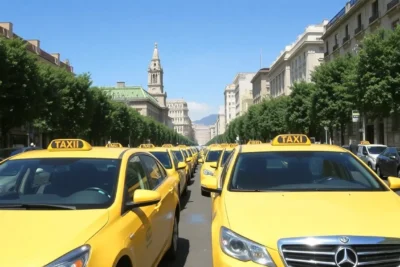
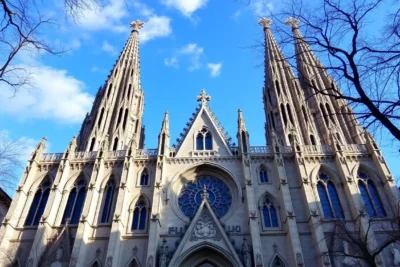

Read more!